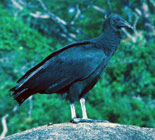 |
 |
 |
Press
"Mad Cowboy: the Documentary"
Vegetarians in Paradise
September 2006
Wake up, PBS! Howard Lyman's documentary has been out there for over a year. It's time your stations across the United States gave the general public an opportunity to experience this remarkable crusader. That doesn't mean slotting him at 1:00 a.m. or other late evening hours. The Mad Cowboy belongs in prime time coast-to-coast.
At VIP we have followed Lyman's remarkable career as he crisscrossed the United States for the last ten years with the Mad Cow message most Americans did not want to hear. In his books Mad Cowboy and No More Bull he has revealed how mankind's passion for animal protein is killing us and destroying our planet.
Mad Cowboy Documentary Like his books, this movie shows how Lyman changed his own position on agriculture and personal diet. A fourth generation cattle farmer, he is now a committed vegan. He realizes that the chemicals and herbicides he used in his farming poisoned the land and may have been responsible for his brother's death at 32. The tumor on Lyman's spine may have been the result of those same chemicals. Following his miraculous surgery, he abandoned farming to assume his major role as a lobbyist in the animal rights and vegan movements.
The movie is an extension of both books as it condenses 150 hours of footage assembled over three years to create a personal picture of Lyman and to graphically relate how he has strived to inform the public of the evils of industrial farming. Because Lyman's five-year effort in Washington as a lobbyist did not lead to significant results, he decided that he could be most effective at the grass-roots level. This led to him traveling thousands of miles around the country speaking to any groups that would listen.
Along the treacherous road filled with numerous obstacles, Lyman has persevered despite being vilified and almost forced into financial ruin. The film details his experience on the Oprah Winfrey show where he described how ground up cow remains were being fed to other cows. Oprah's response: "It has stopped me cold from eating another burger," led to the $180 million dollar lawsuit faced by Lyman and Winfrey.
Willow Jean, Lyman's wife, tells how frightened she was during the trial and how she could not believe someone could be sued for telling the truth. Fortunately, the jury agreed that truth and free speech are more important than food disparagement. John Stauber of the Center for Democracy is shown criticizing the food disparagement laws like the one in Texas that was the basis of this landmark lawsuit. He labels these laws unconstitutional because they prevent free speech.
Lyman receives some vindication in a segment near the end of the film that shows then Secretary of Agriculture Ann Veneman announcing the first case of a mad cow found in the United States. Ironically, in 2006 the USDA announced a further cutback in testing for mad cow disease, testing that was initially instituted because of warnings from people like Lyman.
One of the most poignant segments of the documentary was Lyman's visits in the United Kingdom with families of victims of Creutzfeldt Jakob Disease (CJD), the human variant of Bovine Spongiform Encephalopathy (BSE) or Mad Cow Disease. Speaking to the mother of a young girl whose brain wasted away because she ate infected meat brings tears to Lyman's eyes, and, no doubt, will move the viewer the same way.
Viewers seeing PCRM's Neal Barnard holding a package of baloney as he reminisces with Lyman in the supermarket might consider the scene symbolic. The baloney is similar to what they ate in their youth when they were unaware of the pain and suffering involved in its production. The baloney also represents the story behind packaged meats detailed in the film's graphic scenes showing animal slaughter.
Michael Tobias, a skilled writer/cinematographer, has performed a masterful job in telling Lyman's story in a 79-minute production that displays the mad cowboy's warmth, good humor, his commitment, and his compassion for his fellow beings that is revealed in his books. Reading Lyman is almost as good as experiencing him in a speaking engagement, but seeing him onscreen may be superior to both. He is the perfect person to narrate his own story. With the emergence of documentaries as a popular film genre that appeals to movie audiences, we are hopeful that Mad Cowboy, the Documentary can attract a significant audience that needs to be become aware of how our food is raised and how it impacts our society. As Lyman says, "It's up to us to get involved."
Mad Cowboy, the Documentary can be purchased at http://www.madcowboy.com
 BACK TO TOP
BACK TO TOP
 |
|
 |
|
"Mad Cowboy: the Documentary"
Vegetarians in Paradise
September 2006
Wake up, PBS! Howard Lyman's documentary has been out there for over a year. It's time your stations across the United States gave the general public an opportunity to experience this remarkable crusader. That doesn't mean slotting him at 1:00 a.m. or other late evening hours. The Mad Cowboy belongs in prime time coast-to-coast.
At VIP we have followed Lyman's remarkable career as he crisscrossed the United States for the last ten years with the Mad Cow message most Americans did not want to hear. In his books Mad Cowboy and No More Bull he has revealed how mankind's passion for animal protein is killing us and destroying our planet.
Mad Cowboy Documentary Like his books, this movie shows how Lyman changed his own position on agriculture and personal diet. A fourth generation cattle farmer, he is now a committed vegan. He realizes that the chemicals and herbicides he used in his farming poisoned the land and may have been responsible for his brother's death at 32. The tumor on Lyman's spine may have been the result of those same chemicals. Following his miraculous surgery, he abandoned farming to assume his major role as a lobbyist in the animal rights and vegan movements.
The movie is an extension of both books as it condenses 150 hours of footage assembled over three years to create a personal picture of Lyman and to graphically relate how he has strived to inform the public of the evils of industrial farming. Because Lyman's five-year effort in Washington as a lobbyist did not lead to significant results, he decided that he could be most effective at the grass-roots level. This led to him traveling thousands of miles around the country speaking to any groups that would listen.
Along the treacherous road filled with numerous obstacles, Lyman has persevered despite being vilified and almost forced into financial ruin. The film details his experience on the Oprah Winfrey show where he described how ground up cow remains were being fed to other cows. Oprah's response: "It has stopped me cold from eating another burger," led to the $180 million dollar lawsuit faced by Lyman and Winfrey.
Willow Jean, Lyman's wife, tells how frightened she was during the trial and how she could not believe someone could be sued for telling the truth. Fortunately, the jury agreed that truth and free speech are more important than food disparagement. John Stauber of the Center for Democracy is shown criticizing the food disparagement laws like the one in Texas that was the basis of this landmark lawsuit. He labels these laws unconstitutional because they prevent free speech.
Lyman receives some vindication in a segment near the end of the film that shows then Secretary of Agriculture Ann Veneman announcing the first case of a mad cow found in the United States. Ironically, in 2006 the USDA announced a further cutback in testing for mad cow disease, testing that was initially instituted because of warnings from people like Lyman.
One of the most poignant segments of the documentary was Lyman's visits in the United Kingdom with families of victims of Creutzfeldt Jakob Disease (CJD), the human variant of Bovine Spongiform Encephalopathy (BSE) or Mad Cow Disease. Speaking to the mother of a young girl whose brain wasted away because she ate infected meat brings tears to Lyman's eyes, and, no doubt, will move the viewer the same way.
Viewers seeing PCRM's Neal Barnard holding a package of baloney as he reminisces with Lyman in the supermarket might consider the scene symbolic. The baloney is similar to what they ate in their youth when they were unaware of the pain and suffering involved in its production. The baloney also represents the story behind packaged meats detailed in the film's graphic scenes showing animal slaughter.
Michael Tobias, a skilled writer/cinematographer, has performed a masterful job in telling Lyman's story in a 79-minute production that displays the mad cowboy's warmth, good humor, his commitment, and his compassion for his fellow beings that is revealed in his books. Reading Lyman is almost as good as experiencing him in a speaking engagement, but seeing him onscreen may be superior to both. He is the perfect person to narrate his own story. With the emergence of documentaries as a popular film genre that appeals to movie audiences, we are hopeful that Mad Cowboy, the Documentary can attract a significant audience that needs to be become aware of how our food is raised and how it impacts our society. As Lyman says, "It's up to us to get involved."
Mad Cowboy, the Documentary can be purchased at http://www.madcowboy.com

